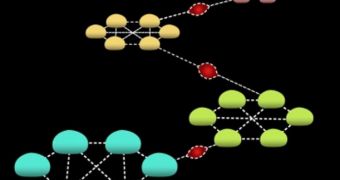One of the most serious problems affecting may grids, sensor networks, computers and electronics is that some setups are so designed that signals have to pass through so-called bottlenecks at given times.
These are points inside a grid or a network through which all data needs to pass before it can spread further. These locations are highly vulnerable physically, and they also make transferring data through the network very difficult.
But a researcher at the Massachusetts Institute of Technology (MIT), in Cambridge, recently proposed a solution to this problem, that would see the issue of bottlenecks completely taken out of the picture.
What the new algorithm does is that it enables a much faster dissemination of data through a given grid. Such an ability is obtained by allowing the grid to organize themselves.
Over the past few years, the electronics industry began turning a kinder eye to a decades-long idea that called for the creation of something called “smart dust,” an invention that would change the world.
This grid would be exactly what its name implies – a collection of tiny, dust grain-sized sensors that would float freely into the atmosphere, and that would be able to collect a wide variety of measurements.
It could for example test the structural integrity of buildings and bridges, or monitor the concentration of various chemical elements in the planet's atmosphere. However, in order for that to become a reality, a number of conditions need to be met beforehand.
The most important is that the data collected by one sensor makes its way to a command center as fast as possible. This means that the grid the smart dust will produce cannot have bottlenecks or choke points unless they are in very small numbers.
The algorithm MIT Computer Science and Artificial Intelligence Laboratory postdoctoral student Keren Censor-Hillel developed can do just that, and not only for sensors.
“It never gets to identify the bottlenecks. It just copes with their existence,” says the expert of how networks behave when they are endowed with the new algorithm.
The only problem with the new computer program is that it takes up a lot of bandwidth to function. As soon as experts figure out a way to make it work and consume less, we could expect to see it underlying various new grids and networks soon.

 14 DAY TRIAL //
14 DAY TRIAL //